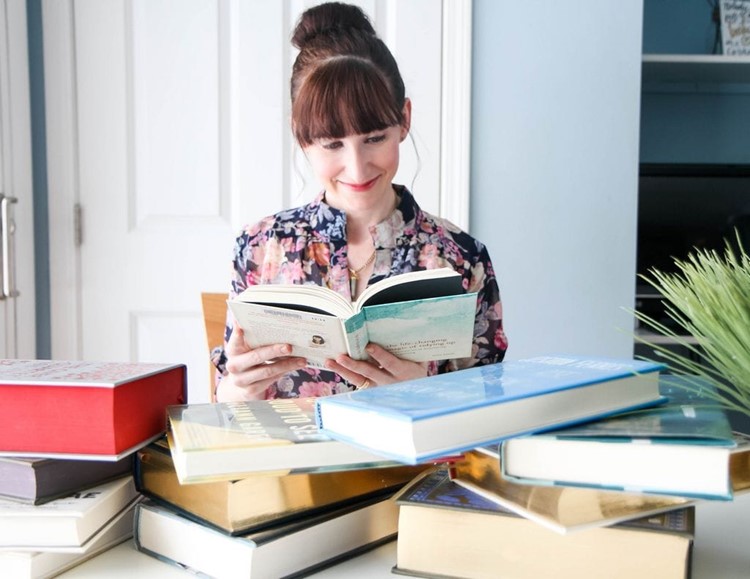
It is such an incredible honor to share an interview with Affinity Konar, the gifted and talented author of, “Mischling.” I doubt that you could read her haunting book and not be completely moved, both by the story of these incredible children and the poetic words that Konar writes in this finely crafted novel. I could not wait to reach out to her and share more about her own story behind the story on the site.
It is a book that I can’t stop thinking about and the story of Mengle and his experiments, truly, shook me to my very core.
Don’t worry, if you haven’t gotten to this one yet, there are no spoilers in this interview. I would love for you to learn more about this and Affinity’s own journey to Poland to connect with her Jewish heritage and think this interview offers so many important lessons, especially so shortly after Holocaust Remembrance Day.
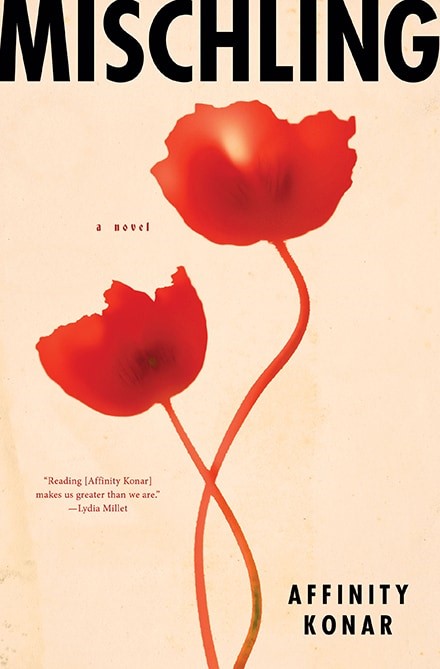
As you know, I have read so many books about the Holocaust over the years, but I never feel like I am informed enough about the horrors and struggles that were faced during this time in history. Once again, I find myself oblivious to those who suffered as Konar unfolds the story of twins, Sasha & Pearl, who became a part of the experimental population of twins that were known as Mengle’s Zoo, based in Auschwitz.
Many begged and falsely claimed that their children were twins to be part of Mengle’s Zoo because they believed they had been saved from certain death. Unfortunately, these children were far from safe and became a part of tests to separate the twins from one another, both physically and psychologically. Konar explores this through these sisters, told from alternating perspectives, as they are brutally experimented upon.
How something so horrible could be written so beautifully is a true tribute to Konar’s writing. Her writing style reminded me a lot of Eowyn Ivey’s writing in her beautiful book, The Snow Child, an almost magical quality even to the harshest of moments. It’s impossible to read Konar’s words and not feel deeply moved and surprised by her well-crafted language. Beautifully told and based upon the stories of real victims of these crimes, Konar’s debut is strong and promising!
Please grab your coffee and settle in for more about Affinity’s story!
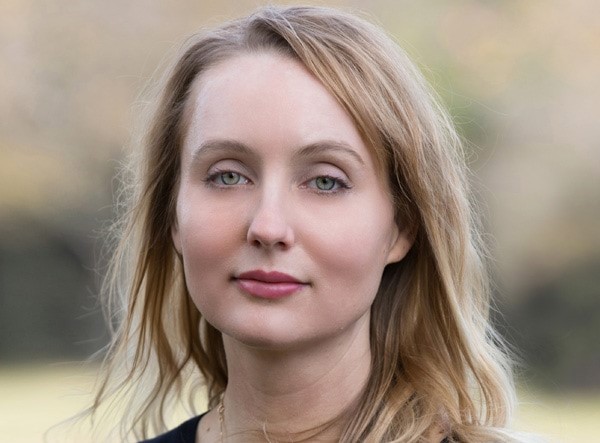
Your book is absolutely incredible, heartbreaking, and important. I have read many books on the Holocaust, but I have never read these stories told with the storybook or fable-like quality when writing about these unspeakable horrors. Why did you choose this approach to your prose?
I’ve always loved Jewish legends and fables, stories that approach transformation, hardship, and dignity, often with a lilt of humor and a sense of the unknowable. I hoped that the book might carry an echo of that texture, that it could inform the voices of girls with these transformative perspectives, and carry them through a world of unimaginable pain and loss. Auschwitz-Birkenau was anti-meaning–I wanted the girls to defiantly find their own world of symbols and objects and living things within it, to cling to any meaning they could create for themselves while in the midst of such dehumanization.
When Stasha sees violence and reconfigures it into something pretty, she does so not in the interest of merely finding prettiness, but to self-protect. It’s a child’s rebellion, a reaction to a life lived in constant peril. I didn’t want to claim that life is beautiful even in the face of suffering, but to explore how trauma might compel one to dwell on what may remain beautiful, in order to endure. I thought that by enlarging the private worlds of the girls, the horror of what they were escaping might be underlined. I often thought of the approach as masking and unmasking. The mask might be fanciful, but the need for it indicts the terror it conceals.
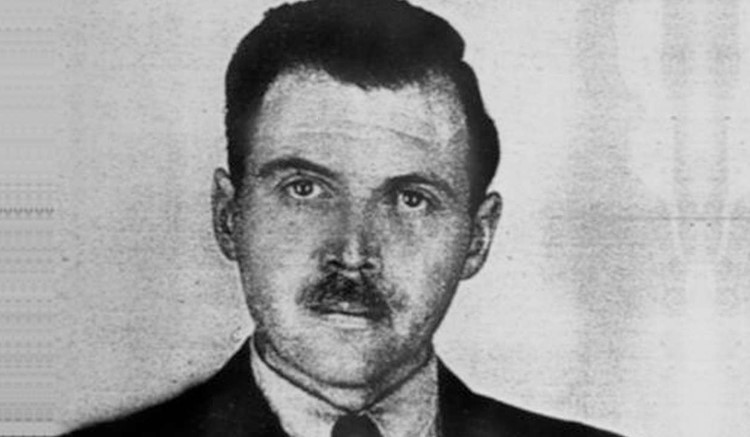
How did you run across the story of Mengele’s “Zoo,” and which real-life accounts influenced your body of work the most?
I grew up reading a lot of Shoah literature, particularly Primo Levi. And I remember reading Paul Celan for the first time as a teenager and feeling utterly changed. So this history and literature was always a presence in my life, especially since my family had been among so few who escaped Poland before the war. But everything culminated when I was sixteen and dropped out of school for a period of time. At the encouragement of my education-obsessed parents, I undertook a kind of autodidactic study and that’s when I found Children of the Flames by Lucette Lagnado, which chronicles the experiences of the twins of Auschwitz. Through that unforgettable book, I found so many others.
For a long time, I focused on Jewish prisoners with medical expertise who were forced to answer to Mengele, like Dr. Gisella Perl and Sara Nomberg-Przytyk. I read a great deal about Jewish resistance within the camps, and the operations of the underground. I became interested in the role of music within Auschwitz, and read Playing for Time, by Fania Fenelon, who was a member of the orchestra.
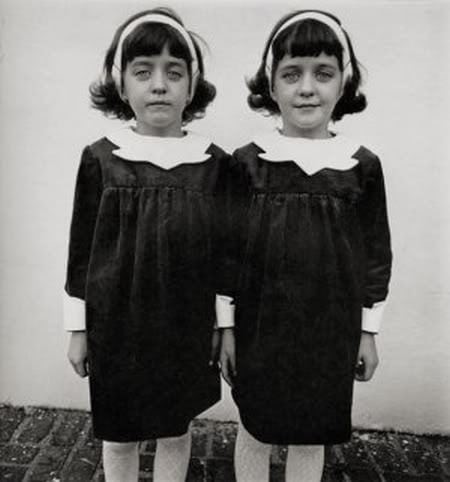
(Eva & Miriam)
And later, I’d find the story of Eva Mozes Kor, who survived Mengele along with her sister, Miriam Mozes Zeiger.
The Diary of Anne Frank was, of course, never far from my thoughts. I studied many books about Mengele and chose to include very little of them in the end. And I was constantly returning to Levi.
Why did you chose the word, “Mischling,” as the title for your book?
It was always tied to the story in my head, as it held a lot of dualities that felt important to the novel. When I first heard it, as a very young person, I was drawn to its lilting, diminutive quality, and then I found its meaning and shuddered, because it’s a term the Nazis used to classify Jews of mixed heritage. If you were mischling, you were afforded certain privileges that assisted survival, but of course, being privileged in the midst of such torment is not without its own psychological burdens. Stasha pummels the word throughout; she uses it to disguise herself, and fantasizes about thwarting Mengele beneath its cover. I hoped to anchor the book with the gravity of this term.
I am sure it would have been easier to have kept the focus your story on Mengele, but you choose to keep the focus on the children instead. Why was it important to tell your story this way?
One of the greatest challenges of the book was measuring how much of a role to give Mengele within the story. I didn’t want to brush past the man and his crimes, but I also feared rendering him in a way that might risk humanizing him. I fell short in trying to comprehend Mengele’s brutality, which was so elaborate and calculated and monstrous that the accounts of it read with a certain surreality that is very dangerous to handle on the page. I worried about lending him a glimmer of charisma, and yet, I couldn’t avoid the fact that Mengele was known to be charming and handsome; he courted the children with attention and candy and gave them rides on his shoulders. This treatment of the children that preceded his vicious experiments–the sickness of it is unspeakable.
After so much time trying to understand something so bottomless, I limited his role severely. I occasionally wondered if I lacked ambition or wisdom for not exploring him more, but ultimately, I couldn’t let him be more than shadow. I wanted the strength of the twins to overwhelm Mengele, to diminish and lessen his presence. Their innocence and love and longing for survival were far more worthy of articulation. He was not to have a voice.
Stasha and Pearl, as twins, have similar but very different voices. What was the writing process like writing these two voices? Did you write these chapters in the order we are reading them or in sections? Did you find one twin’s voice easier to write than the other?
I always envisioned the book as a conversation between a pair of twins, but Pearl’s was the real challenge for me, and I nearly abandoned it after the first half, because I was so daunted by the responsibility of rendering a narrator who bore witness in a very reliable, calculated fashion. That’s unbelievable to me now, because the book would be nothing without her, but it was a real temptation for a bit, and it took me some time to find my footing within her perspective. Stasha’s voice was far easier for me, as it’s pure emotion and image. She’s longing and lament and intensity. That was incredibly satisfying to write, particularly after spending so much time within the research.
The chapters were written very much out of order, partly because I spent many years not knowing what the book needed to be, and partly because of my terribly disorganized nature. I wanted the voices to be similar, but to also bounce off each other in contrast. So I’d spend months writing in one voice, and then return to the other, hoping to make them meet. Properly setting up the links between Stasha and Pearl was one of the biggest technical challenges for me, and it took a great deal of traveling between chapters to smooth the transitions between them.
As a reader, it was often difficult to read of the tortures that were inflicted upon these children. How hard was it to immerse yourself in this work and what scene did you find the most difficult to write?
I understand how hard it must be to read, and at the same time, I feel that it can never be hard enough. I only felt the enormity of the immersion after it abated somewhat, and I have to say that I gained immense respect for individuals who investigate crimes against children, genocide, and trauma, because the repeated exposure does appear to change a person. It can hollow you out, or heighten your sensitivities. It can make the prospect of a normal conversation feel impossible. I found myself addressing this grief by reading poets like Paul Celan or Dan Pagis or Edmund Jabez, looking at the paintings of Charlotte Saloman, finding accounts of Jewish resistance, or listening to Yiddish songs from the ghettos and camps. And I tried to be aware of the extreme distance of my pain, of how I was constantly measuring my own sensitivity against horrors I haven’t experienced. I didn’t want to write with a sort of performative empathy, in which sinking yourself into someone else’s torment is the ultimate goal. I simply wanted to write two girls whose love for each other could be touched by horror, but not broken by it.
So many scenes were hard to undertake. The very beginning, where they are parted from their mother and grandfather, under the illusion that Mengele will care for them–even now, I have trouble reading that. The description of the children in the laboratory. The details of Pearl’s imprisonment. And the chapter where Stasha is given an injection by Mengele, and she reconfigures this assault in her mind, to provide herself with an illusion of control–I edited that repeatedly, because it was hard to calibrate what I could personally handle against what needed to happen.
I understand that you recently visited Poland to reconnect with your own Jewish heritage. What did you discover, about yourself, through these travels?
I never imagined I’d go to Poland. I’ve dealt with agoraphobia for many years, often leaving my apartment only for work. So for one of my first real ventures outside of my routine to be in Poland, and then, in Auschwitz-Birkenau–it was a shock to me, and the experience of visiting the camp exposed me to my limitations as both a writer and a person. There was no sense of tidy confrontation and resolution–things opened for me instead, and felt more endless. I felt very small, partly because of overwhelming nature of the experience, and partly because I was with my parents. My father is a well-traveled man, but he’d always avoided Poland. To be there with him, and my mother, who I couldn’t possibly comfort–I’d thought myself emotionally prepared, but I wasn’t. From an early age, I’ve had an irrational fear of separation from my parents, brother, and sister. So to be on grounds where innumerable severances had taken place–it was very fearful, and I felt a bit disassociated from myself while walking through the camp. The very fact that my mind would need to impose this distance on a simple visit, when my life was entirely unthreatened, was illuminating and humbling and it made me question myself a lot. I’d just written a book that claimed that beauty is a reason to live, a form of revenge against the Nazis, a way towards meaning. I still believe this, but when I left Auschwitz, I felt that beauty in its highest form must surely a disruption of cruelty. I’d edged towards that notion before, but I knew then, that I could never go back to thinking of beauty in any other way.
If we are interested in reading more about the real-life heroes that inspired your story, what books or documentaries should we check out?
All of Primo Levi’s books were heavy influences early on, but especially The Truce and The Periodic Table. Children of the Flames by Lucette Lagnado was a vital introduction for me. I Was a Doctor in Auschwitz by Dr. Gisella Perl, a harrowing account that partially informed the character of Dr. Miri. Auschwitz: True Tales of a Grotesque Land by Sara Nomberg-Przytyk, which I discovered late and can’t recommend enough for its unexpected tone and vibrancy.
Eva Mozes Kor’s work is indispensable. She and her twin sister, Miriam Mozes Zeiger, survived Mengele’s experiments at Auschwitz. They founded CANDLES, and a museum in Indiana dedicated to preserving the history of the twins. She has a searing book, Echoes from Auschwitz: Dr. Mengele’s Twins: The Story of Eva and Miriam Mozes, and a documentary “Forgiving Mengele”.

I’m always thankful for these moments with writers and I hope you will pick up this amazing book! You can always connect with me on GoodReads, through our books section of our site, and you can read our entire Sundays With Writers series for more author profiles. Happy reading, friends!
*This post contains affiliate links!